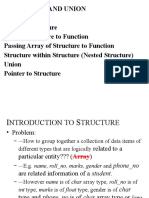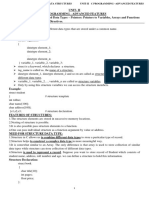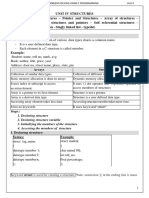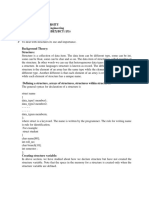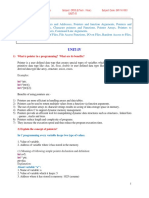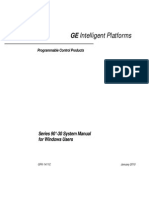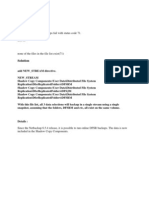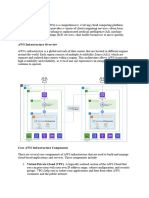0% found this document useful (0 votes)
107 views13 pagesStructures
The document discusses arrays of structures in C. It explains that an array of structures allows common structure definitions to be used for multiple objects like students in a class or employees in a company. It provides examples of declaring and initializing structure arrays and using them to store and print student and employee data. It also discusses passing entire structures and structure members to functions.
Uploaded by
Citdhyd AriseCopyright
© © All Rights Reserved
We take content rights seriously. If you suspect this is your content, claim it here.
Available Formats
Download as PDF, TXT or read online on Scribd
0% found this document useful (0 votes)
107 views13 pagesStructures
The document discusses arrays of structures in C. It explains that an array of structures allows common structure definitions to be used for multiple objects like students in a class or employees in a company. It provides examples of declaring and initializing structure arrays and using them to store and print student and employee data. It also discusses passing entire structures and structure members to functions.
Uploaded by
Citdhyd AriseCopyright
© © All Rights Reserved
We take content rights seriously. If you suspect this is your content, claim it here.
Available Formats
Download as PDF, TXT or read online on Scribd
/ 13



